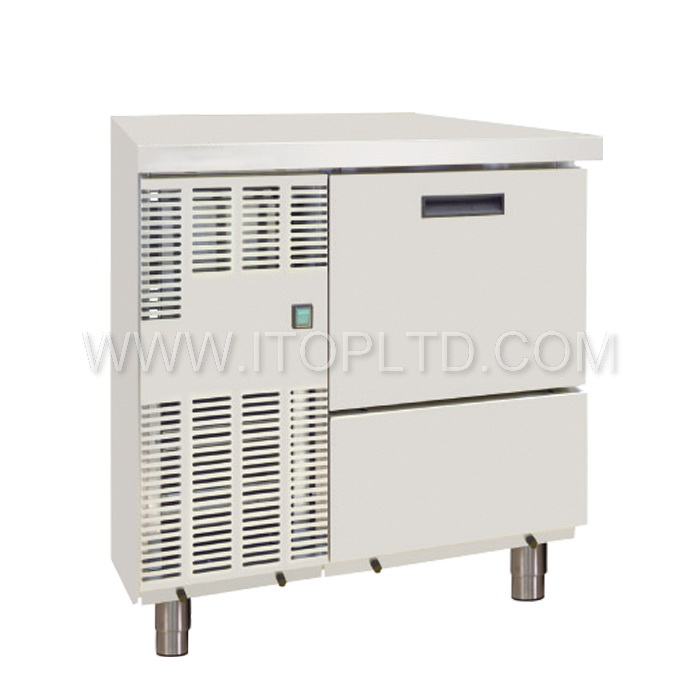
Ice makers are becoming the best features in refrigerators but sometimes; they don’t work as well as they should. Now, before you start complaining to the manufacturer or the retail store where you got your refrigerator from you should at least know a little about how the ice maker works.
The first indication of problems with your machine shows up when your ice maker is not producing ice or not making enough ice.
Let’s look at how an ice maker works.
To make ice it receives water through a ¼” water supply line that runs from the refrigerator to a water source. The water supply runs thought the line to the refrigerator whose temperature is controlled by a thermostat. The water runs to a fill valve, which sends water to a mechanized ice maker assembly. This is where the water is frozen into ice.
When thermostat in the refrigerator shuts itself off when the water is frozen and then turn to a warmer temperature so that the ice cubes can be released easily from the ice mold. A small motor is turned on and this rotates the ice ejection arm responsible for pushing the ice from the mold to the collection-bin. When the ice has been dispensed, the cycle continues again. If ice is not collected, the ice will raise a bail wire to shut off the unit until the level of the ice drops low enough for the cycle to repeat itself.
When you encounter problems with your machine not making enough ice, here are some troubleshooting tips that you can follow to determine the root of your machine’s problems:
1.Check the machine shut-off arm in your freezer. This arm should extend to the machine. When that arm is down, it means the machine is on, when it is horizontal, it means the machine is off. You may need to remove the ice bucket to check this shut-off mechanism. Another thing to check is the on/off position of your machine.
2.Make sure that the freezer temperature is set at 50ºF or lower. If not, adjust the thermostat. If you are not sure of the settings, you can use a cooking thermometer and place it in the freezer in a bowl of cooking oil. The cooking oil will not freeze but the thermometer should give you a more accurate reading if you leave it in there for more than two hours. If the reading on the thermometer does not correspond with the set temperature on the freezer thermometer, you may need to readjust the thermometer itself.
3.The next thing you will need to do is to unplug your refrigerator and move it so you can get to the water supply line. Turn the ice maker off by turning the supply valve off. Remove the line from the valve, turn the water supply valve on and check how steady the flow of water is. Use a bucket to collect the water that comes out.
4.Check the inlet valve. You can do this by inserting a small, flathead screwdriver, remove the inlet screen also and check for any debris that might block water coming through as it should. Flush the line with cold water.
5.Check the tail tube located above the ice mold. If it is frozen, thaw it by using some source of heat like a hair dryer until the frozen water thaws and flows. Simple.
6.Connect all the disconnected lines before you push the refrigerator back to its position. Replace the ice bucket and wait for 24 hours to see if the ice maker is working properly again.
This should help you to get your ice maker working properly again. Good luck!
 English
English  Français
Français  Deutsch
Deutsch  Italiano
Italiano  日本語
日本語  Русский
Русский  Español
Español  العربية
العربية  Português
Português 


Product inquiry
Fatal error: Class 'Plural_Forms' not found in /www/wwwroot/www.itopltd.com/wp-content/plugins/translatepress-multilingual/includes/gettext/class-plural-forms.php on line 126